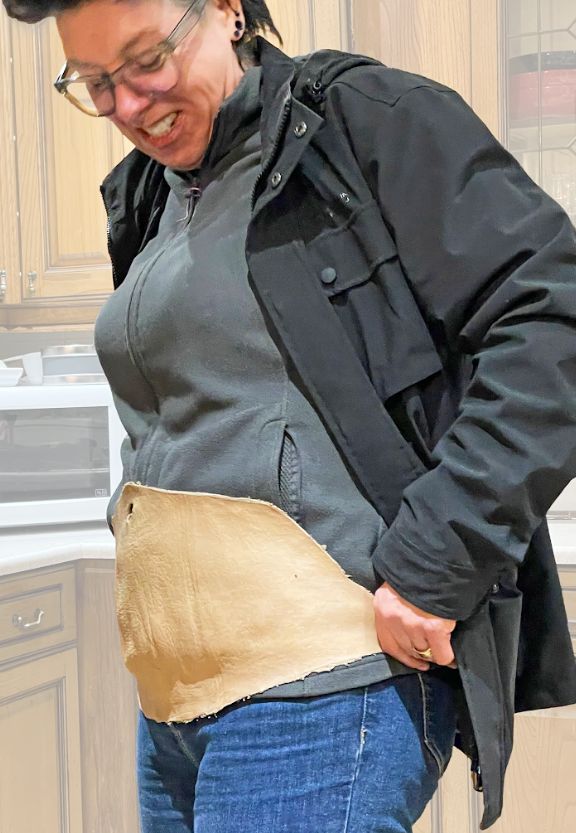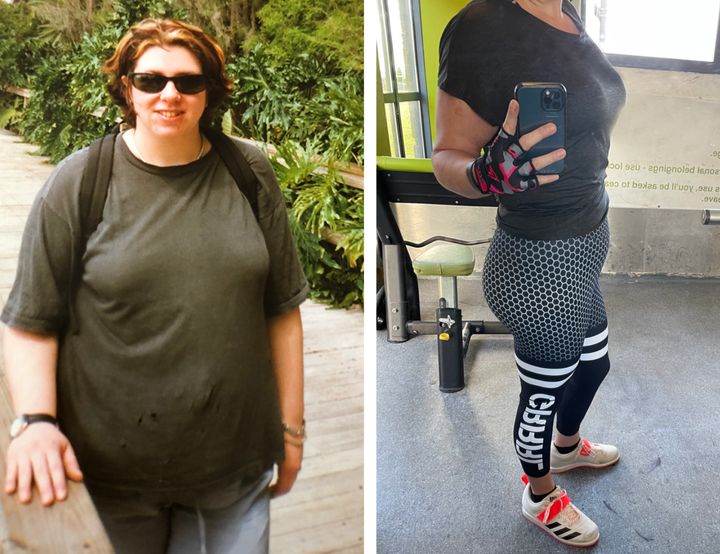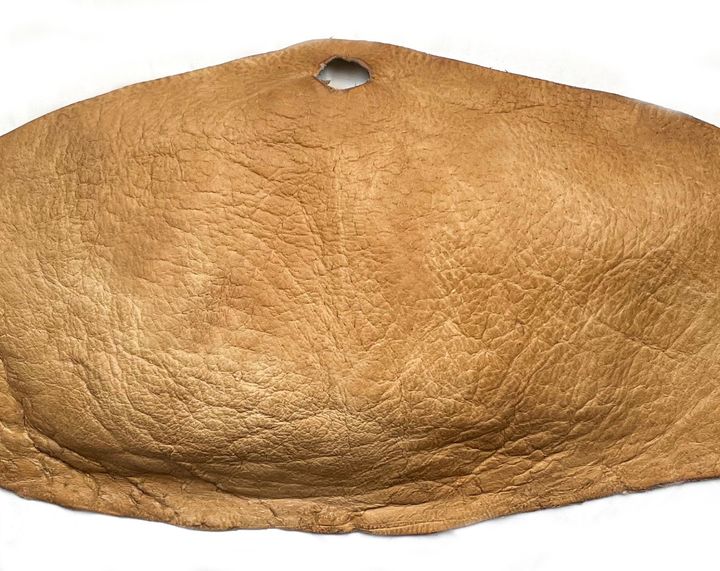
I have spent my whole life as a bigger person. I always struggled to find clothes that fit, and I was constantly disappointed with the limited options available to me.
After the birth of my second child 18 years ago, I was at my largest and was diagnosed with Type 2 diabetes. This quickly escalated to me having to inject medicine daily to manage it. This was a significant tipping point for me and the start of a very long journey to manage my diabetes but also to lose over 85 pounds.
Losing weight was a slow process involving different diets and exercise regimes. Eventually, I discovered an approach to eating and being active that I could realistically manage and enjoy, and it also significantly reduced my need for diabetes medication.
By spring 2022, I felt I had reached a weight with which I was content. However, I was left with considerable loose skin around my stomach area that was making me very unhappy, and no amount of weight training lessened it. I had lost a lot of weight, but I still couldn’t wear what I wanted, and I constantly dressed to cover that area of my body. I desperately wanted to be able to tuck a shirt into my trousers — but more than that, my stomach skin made everyday tasks like running up a staircase uncomfortable. I was miserable and decided to surgically remove the excess skin as the final part of my long journey.
Then I got an idea.
As a contemporary artist whose practice is incredibly materials-led, I utilise unusual materials within my work to convey meaning that other materials simply wouldn’t, from animal intestines to concrete to fibre optics to gelatine and everything in between. I realised my upcoming surgery could provide an all-too-perfect opportunity to acquire a new material ― my own skin!
I knew that this was not going to be an easy process. I began by reading the U.K.’s Human Tissue Act to find out if there were any legal reasons that might stop me from being able to keep my skin once it was removed. I found nothing, so I wrote a long letter to the hospital asking for my skin to be returned to me after the operation.
The hospital agreed, but there were some conditions. The skin needed to be picked up directly after the operation because it could not be stored at the hospital for the days I would be recovering from my surgery.
I asked my son and husband if they would pick it up on my behalf, and they both refused! My family is used to my strange requests, but this one was just too weird. My husband was feeling particularly worried about my surgery ― especially as it was taking place during COVID ― and dealing with my unorthodox art project was the last thing he wanted to think about.
Instead, my amazing friend and fellow artist Catalina Renjifo agreed to pick it up after work on the day of the operation. She turned up at the hospital on her push bike and delivered it to my house, where I had cleared out a drawer in my freezer to accommodate it. (I used this location in my favour, as it acted as a threat to keep my family from eating the ice cream too quickly ― “I’ll put them in the tummy bucket!”).

So, 4.5 pounds of skin sat in my freezer for nine months while I researched methods of tanning it into leather. First, I bought an at-home tanning kit, but the more I thought about it, the more I felt there was too much at risk. I had one chance at this, and doing it on my own seemed like too much responsibility. I didn’t feel confident enough that I would get it right.
I reached out to several survival courses where tanning animal skin was offered as part of the experience to see if any of them would be interested in supporting me. Unfortunately, I received several refusals ― no one wanted that responsibility, either, or they simply didn’t want to do it with human skin.
Eventually, I was sent the contact details of Theresa Emmerich Kamper, who has a Ph.D. in experimental archaeology and over 30 years of experience in prehistoric skin tanning. She jumped at the opportunity and seemed to be as excited as me about the whole prospect! We set a date in January 2023 to begin the process.
With my skin defrosted and in a bucket, I drove down to Exeter in Devon to spend a week with Teresa. We processed the skin by first scraping the fat away. It was then soaked in a bucket with tanning solution for a few days and was regularly stirred. During the last couple of days, we softened it and stretched it while drying it in Teresa’s tumble dryer!
“The grain is similar to pig skin... but this skin has single follicles rather than in groups of three,” Teresa noted. “The connective tissue between the dermis and the fat layer is the thing which is noticeably different from any species I’ve previously worked with. Really interesting!”
“It was a very strange experience to see a part of my body that had been so familiar to me now completely detached, but as the week progressed, my skin became less and less me.”
It was a very strange experience to see a part of my body that had been so familiar to me now completely detached, but as the week progressed, my skin became less and less me. I can still see elements and references within it ― my cesarean scar, for example ― but the texture and sight of it is so removed from being me now that it is disembodied and abstracted from my body.
Through my research, I have found no other references to human skin being processed in this way before. Nearly everything I read about human leather involved punishments from an age when human dissection was undertaken on people accused of crimes as part of their court judgment, and surgeons sometimes made use of the resulting skin to bind books. There are several examples of human skin-bound books in the U.K., including William Burke’s skin book in the Surgeons’ Hall Museums in Edinburgh or The John Horwood book in Bristol’s M Shed museum. There are also examples of human skin being kept and tanned to preserve tattoos as well as the well-known and documented horrors of the Nazis using human skin.
My art practice and current Ph.D. research explore human remains and what is left behind after death. I am interested in the space between life and death as well as the moment when someone dies, and belongings and clothes go from mundane everyday items to precious keepsakes. The work I have done with my own skin has resonated with my current research interests, especially exploring the transformation of an abhorrent object that has been sanitised and made visually less horrific.
Going into this process I was worried about what I would feel, but my experience of tanning my own skin wasn’t really what I thought it would be. I am not someone who is particularly squeamish but I did wonder how I would feel when confronted with part of myself. It felt like seeing an old friend again ― familiar but not horrific.

Humans have been preserving parts of the body or entire bodies for thousands of years. Sometimes it’s done purposefully, as with embalming, and in other instances, the conditions within the ground where the bodies were buried somehow naturally preserved them. Preserving human remains can be a part of religious ceremonies, such as funerals and burials, or it may be done for other reasons, like anatomy museums preserving specimens to enable future generations of students to learn from them.
For me, the leather tanning process was my own act of preservation. By transforming my skin in this way, I am claiming a powerful and visual reminder of my weight loss journey for myself. As a visual artist who works with materials, this felt like a very natural route for me to take. However, I do understand that this isn’t everyone’s idea of a normal process and that it might seem shocking or even gruesome to many people. Surprisingly, I have had no definitively negative comments.
During my week in Exeter, we documented the tanning process in real time on Instagram, and I was very ready for a slew of negative comments — but the majority of them were like, “What the F? Hey, wait a minute, that’s really interesting” or, “I feel so uncomfortable yet so in awe!” Teresa told me she was grateful she got to be part of such a rare opportunity and that it’s been “absolutely fascinating so far!”
I’ve decided not to make my piece of stomach leather into anything. It feels too precious to cut into and, for me, part of the story is in the shape of it as it is. However, I do anticipate I will exhibit it in some way at some point in the future. I want to find someone to make a display case for it, but at the moment, it is rolled up in a plastic bag and occasionally makes outings in my handbag when someone is keen to see it!
There are a lot of ideas to pick through now. I consider my skin leather a part of my Ph.D. research, but it also tells the personal story of my journey. The whole process has been a once-in-a-lifetime opportunity that I simply couldn’t pass up. Now I have this visceral token of my transformation that exists as a reminder of where I came from, how I got to where I am today, how incredible and resilient the human body is, and as a reminder to take care of myself.
Katie Taylor is an artist and Ph.D. researcher based in Oxford, U.K. Her work and research explore identity and individuality from unidentified human remains. She has exhibited nationally and internationally, including in China and Germany. She has also had a paper on her research published by the Taylor and Francis journal “Textile: Cloth and Culture.” You can find her on Instagram @bigtangle and on Twitter @bigtangle.